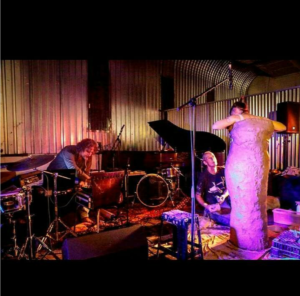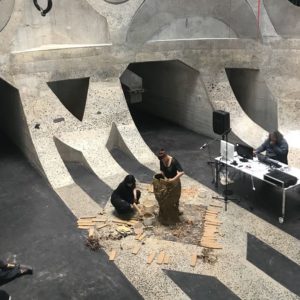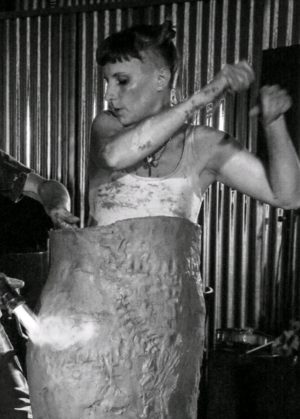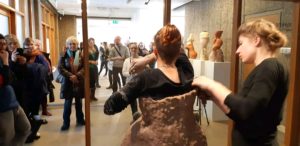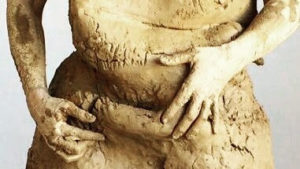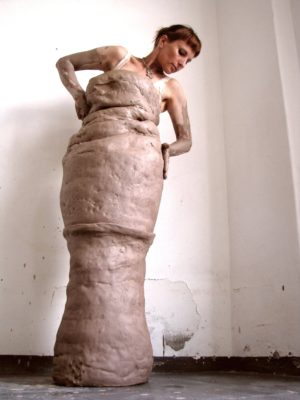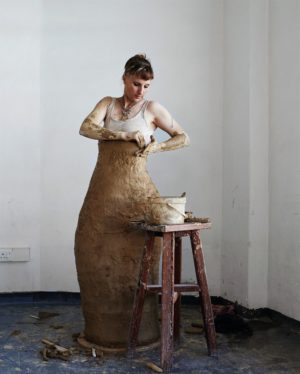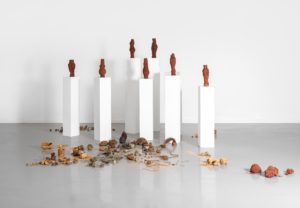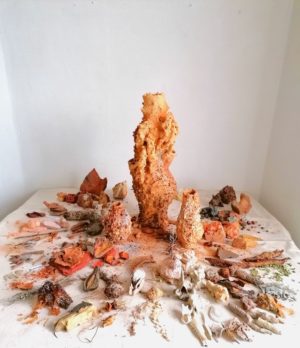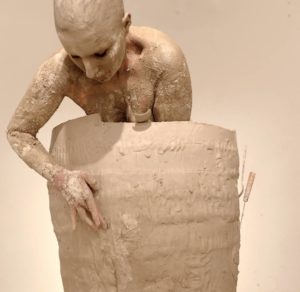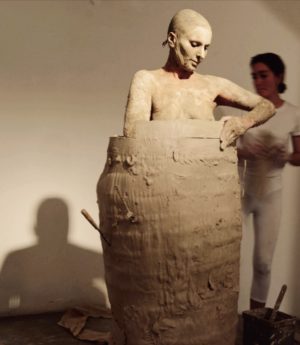Belinda Blignaut
|
I’m Belinda Blignaut from South Africa. I was born on a farm in a wild and quite untouched part of the Cape Province. My farm roots have come to mean more and more to me as I’ve grown older. Growing up in this way has informed a lot of my current art practice. After school I travelled through Europe for a few months and then began my art career. My work was bold and provocative, challenging norms and equality during a time of terrible political unrest, during South Africa’s apartheid years. I used the idea of the body to explore this territory. The one thread running through my work over decades has been that of transformation and the body. I (re)discovered clay about a decade ago, opened a clay studio and began working with people with special or other needs, children and adults with psychological and mental health challenges. I worked for many years with people with Alzheimers and dementia, autism, ADHD, and children living with trauma due to abuse and sexual abuse. This has all ended now because of Covid. |
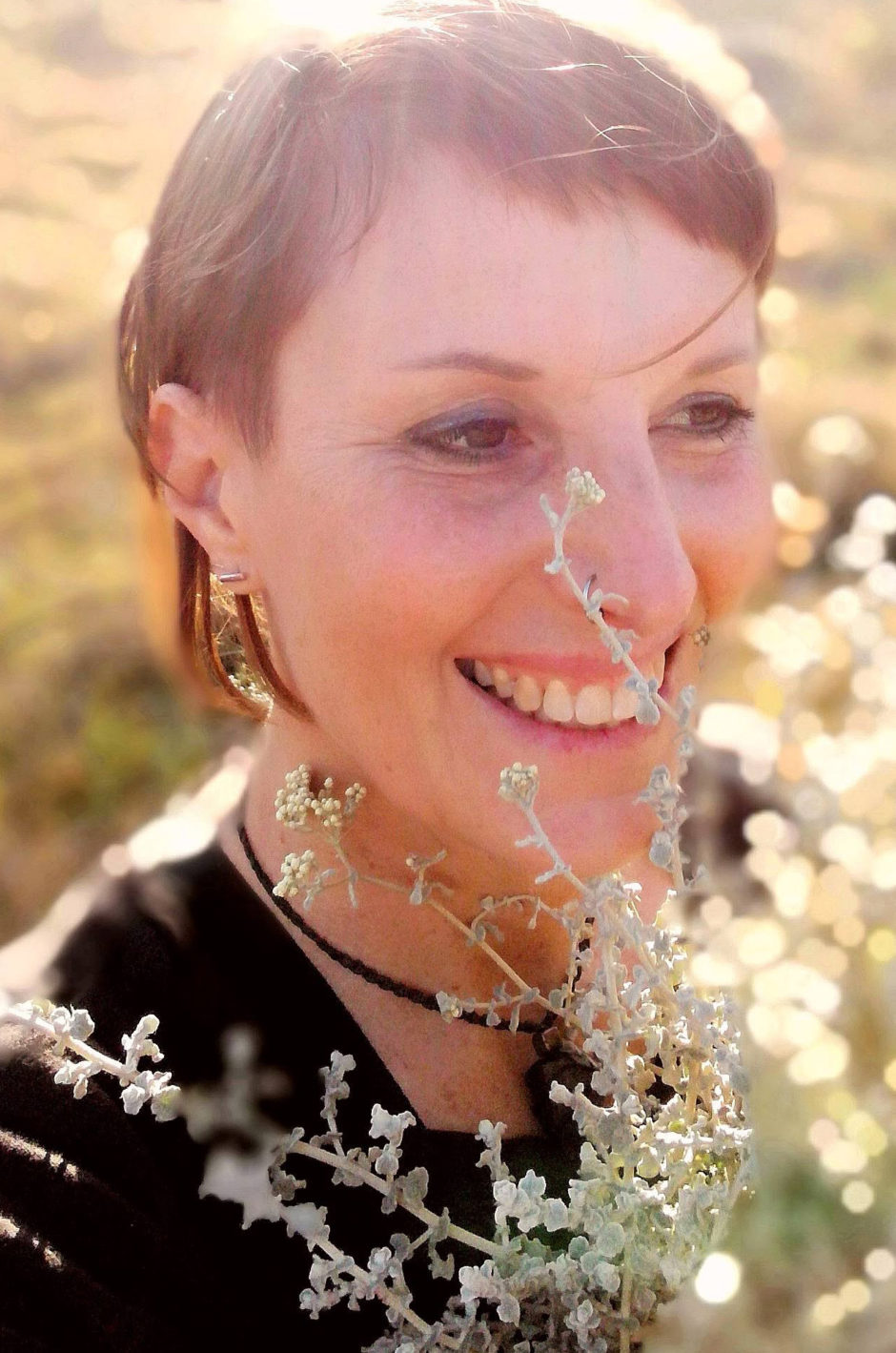 Belinda Blignaut |
||
| This work with others, together with digging my own clay from the ground brought something in me to life in a new way. I also work with foraged organic matter. I make my own glaze from the ash of medicinal plants, learning every day from nature: how it grows, how it forms, how it adaps and survives. I remain in awe. | I have had an ongoing interest in the concept of the ‘vessel’, bringing together ideas the of usefulness of art, ideas of functionality, a bodyness in form, earth/nature, and transformation through fire. I explore all of this through the vessels I make in my studio. | ||
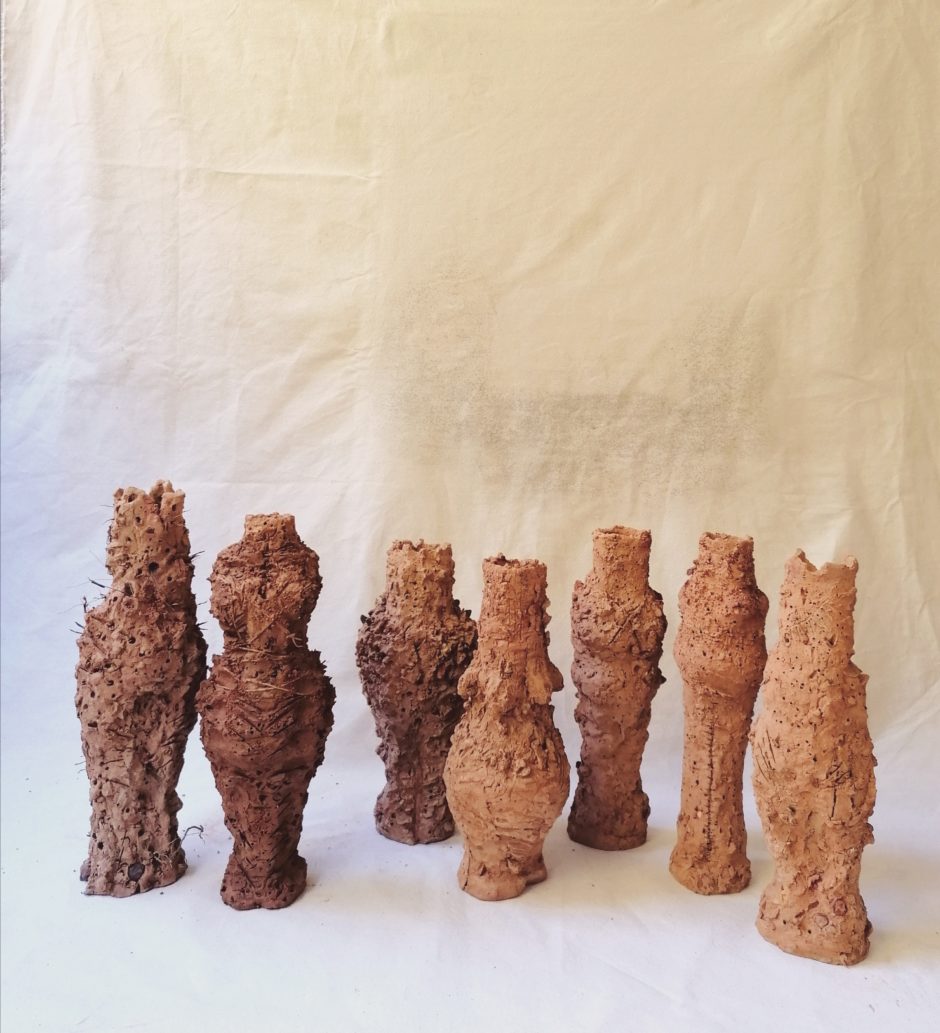 Clay vessels in progress |
|||
|
It was all of these things that had me stepping into clay and building a vessel around myself. I was hidden in a corner of my studio, which has large windows on the street, a shopfront – so no one would see me. I was thinking I was crazy. I also know whenever I think I’m crazy in my work, I’m on the right path. Right from the start the piece was titled ‘Working From The Inside’ and it’s now been done many times in many places. |
Through this I have learned to fight with it, to surrender to it, to break and build again. And again. As many times as it takes. I learnt resilience. And I learnt to really listen to the clay. With a noise musician friend I began recording sounds of the making of the work, hundreds of sounds both outdoors and in studio, in the earth and during building and firing. My friend now plays those recordings live for the eight hours it takes me to build. | ||
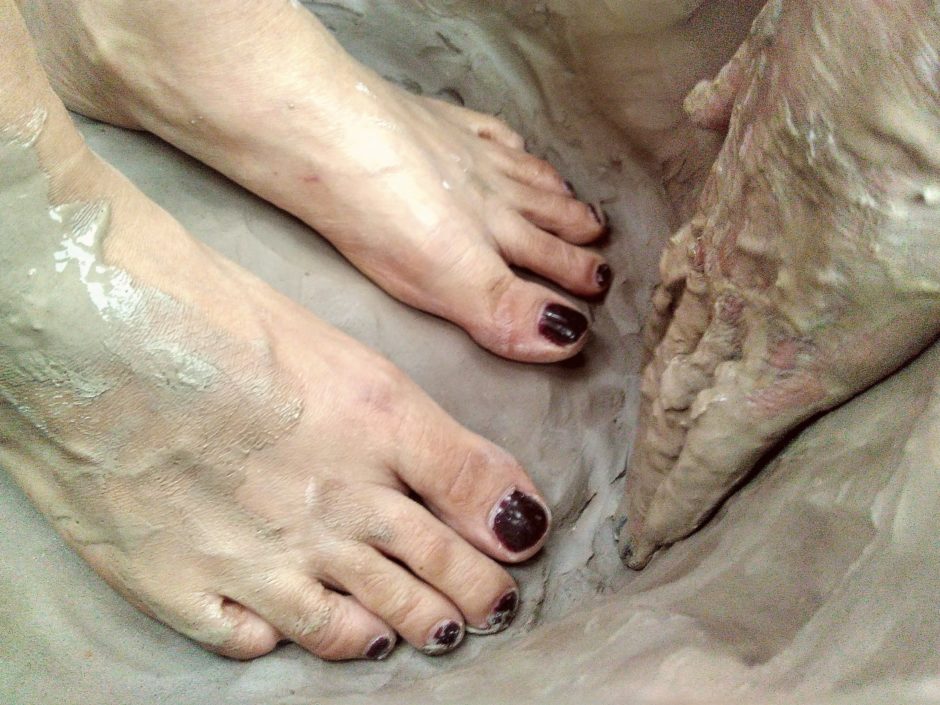 Artist’s feet inside a vessel she creates for her ‘Working from the Inside’ series |
|||
| The piece, for me, is about letting go, becoming stripped of everything, wrestling with the clay. It’s about connections, earth connections, endurance, transformation and transcendence. The outer work is the inner work. | As the piece has grown, I’ve gone further. My understanding of reaching a ‘new space’ has also grown and now I strive for this each time: to endure further, to push my mind and body further. I want to know more, to keep learning from earth. | ||
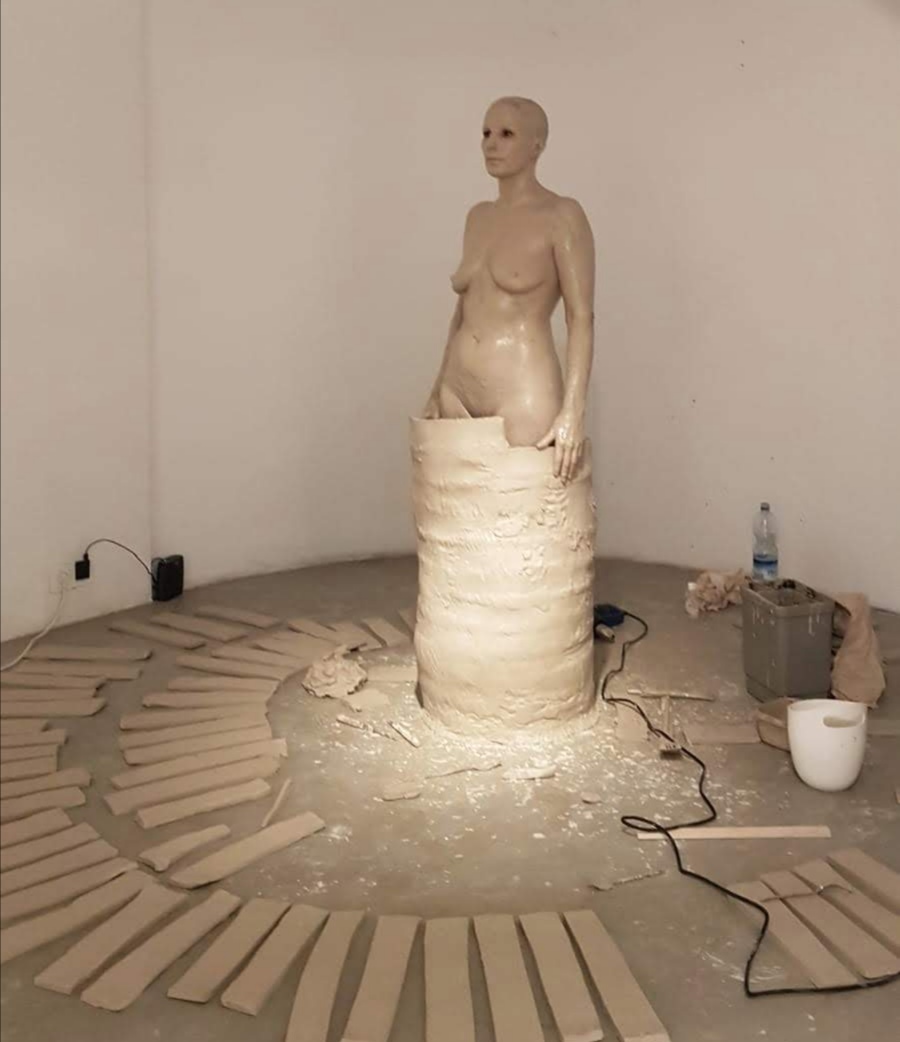 Artist mid-way through creating a vessel around her as part of her ‘Working from the Inside’ series |
|||
|
|
|||
|
|||
|
|
|||

